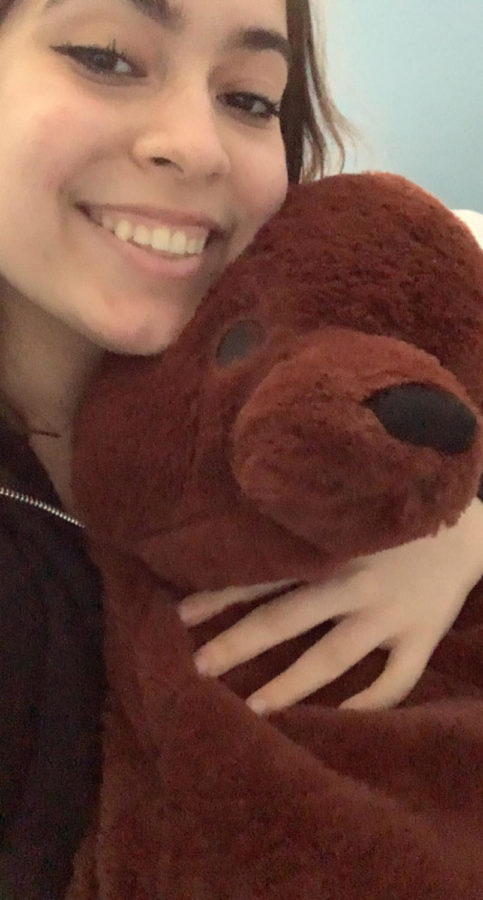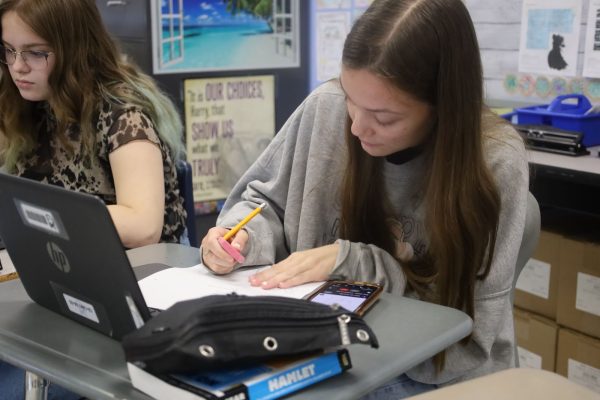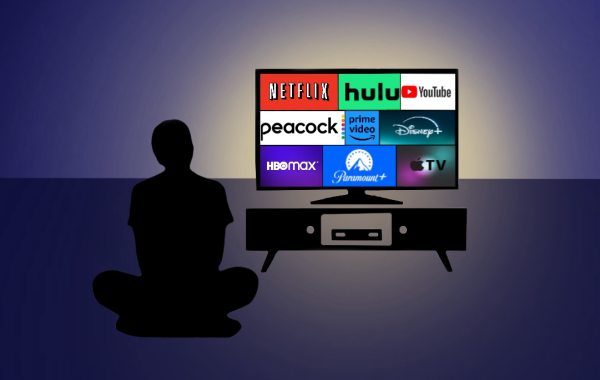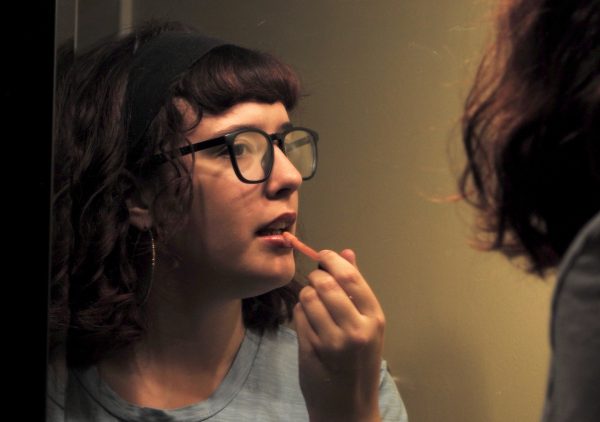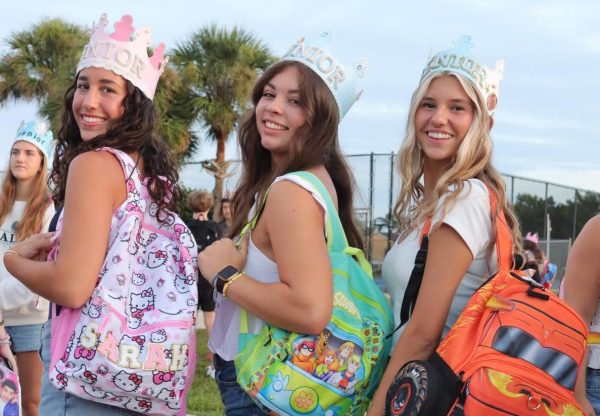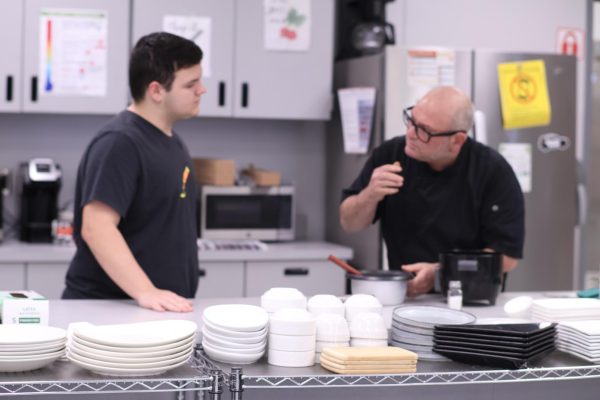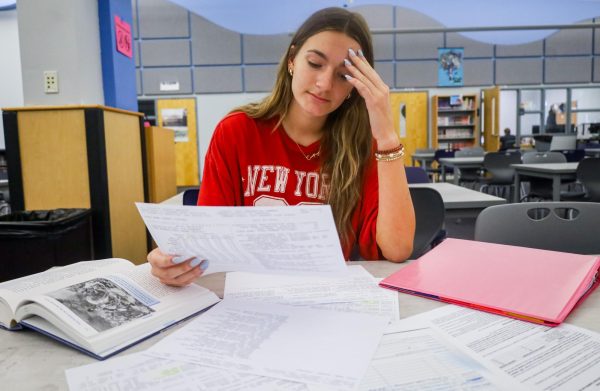Close for comfort
photo by Skyler Glenn
Amanda holds her comfort object, named The Cat of Anti-Anxiety. Ever since buying the cat in 2019, it has helped her process emotions and alleviate anxiety.
Sitting down at her first job interview, Amanda* nervously pulled her purse onto her lap. As the interviewer asked her questions about her qualifications, she reached for the one thing that gave her a sense of confidence and calm: The Cat of Anti-Anxiety. Ever since seeing the stuffed cat at Dillards in 2019, Amanda knew it would never leave her side.
“She was super soft and extra jingly and I knew I needed her immediately,” Amanda said. “I take her everywhere with me: flights, road trips, interviews, school, important events, or just out and about.”
Comfort objects – usually stuffed animals or blankets – are items used for consolation during times of anxiety or sadness. Though they are often perceived as childish, Build-A-Bear and Atomik Research found that more than 40% of U.S. adults sleep with teddy bears to combat loneliness, and 30% associate their teddy bear with comfort (2017). Disregarding the stereotypes, Amanda believes that comfort objects can benefit anyone.
“If you know that having a stuffed animal in your pocket makes you feel good, why wouldn’t you do it?” Amanda said. “If it makes you feel better, it’s [important] to not neglect that aspect of taking care of yourself.”
Many receive their comfort objects early on in their childhood and carry it with them as they grow up. Junior Mackenzie Allis has held onto her stuffed dog, which she calls Party Dog, since her first birthday.
“Party Dog means the world to me because it is one of the staples of my childhood,” Allis said. “If I were to lose it or have something happen to it, I would definitely be heart broken.”
While the objects themselves provide solace to their owner, the gifter of the object can also be important. Jordan* received a memory foam seal named Lunch from their aunt on their 16th birthday, and their bond with Lunch is largely because of its connection to their aunt, they said.
“[My aunt] has always been really supportive of me even when the rest of my family hasn’t,” Jordan said. “She lives in Maryland, and I don’t get to see her very often, so having the seal is almost like having a little piece of her with me.”
The same is true for junior Emmalys Caamaño. Unable to celebrate Valentine’s Day in-person with her long-distance boyfriend, Luke, Caamaño found comfort and love in her stuffed bear, Chungi, that he gave to her.
“Long distance can be very difficult, and when I have this bear, it makes me feel like I have a part of him with me,” Caamaño said.
Comfort objects are great to look at and cuddle, but their role in providing calmness is far less tangible. Following a series of traumatic events, Jordan struggled to process and accept what they had experienced. Feeling unable to open up to real people, Lunch proved to be the best listener.
“I felt so overwhelmed. I didn’t feel like I could talk to anyone about it without bothering them,” Jordan said. “Without Lunch there, I would have felt more alone and may have been even more upset.”
Prior to his Navy deployment, John’s* father purchased him a dalmatian Pillow Pet, named Spot, to lessen the pain of moving. Though John is extroverted and friendly, he initially struggled to make friends due to constant moves across the country. In the Atomik study, clinical psychologist and author Dr. Shefali Tsabary noted that children tend to develop secure bonds with stuffed animals to help ease them through transition periods. John’s relationship with Spot gave him peace of mind during rough patches.
“Spot has been there for me for most of my life,” John said. “He’s pretty damaged, so it takes me back to all we’ve been through.”
Many people who own comfort objects are neurodivergent, and holding these items can help to alleviate their struggles. Growing up with difficult hyperfixations, executive dysfunctions and anxieties, Amanda always knew that “something was off,” and after being diagnosed with autism in 2021, she learned how to better handle her situation. Her comfort objects – The Cat of Anti-Anxiety and a fictional character keychain – double as stims, as she can rattle the cat and rub the keychain.
“I have a tendency to hyperfixate on the media I consume, so it provides me with a lot of happiness. The keychain is a byproduct of that,” Amanda said. “When I have a lot of emotions, I need something to do with my hands, so they provide that.”
Because comfort objects have helped Amanda so much, she carries the cat and other stuffed animals around school to help herself and her peers. Whenever someone is stressed and asks to hold one of her objects, she always obliges, she says.
“When someone is anxious or upset, it tends to help a lot,” Amanda said. “It’s nice to have a physical reminder that everything will be okay.”
As people get older, so do their comfort objects, but that does not take away from their sentimental value, according to Allis. Though Party Dog is more than 15 years old and has many damages, she plans to keep it as a memory for years to come and someday pass on the joy.
“Party Dog reminds me of where I come from and that is so important to me,” Allis said. “I want to someday give my own children their very own party dogs, because I want that same safe comfort for them.”
*Names changed for privacy
Your donation will support the student journalists of Hagerty High School. We are an ad-free publication, and your contribution helps us publish six issues of the BluePrint and cover our annual website hosting costs. Thank you so much!


